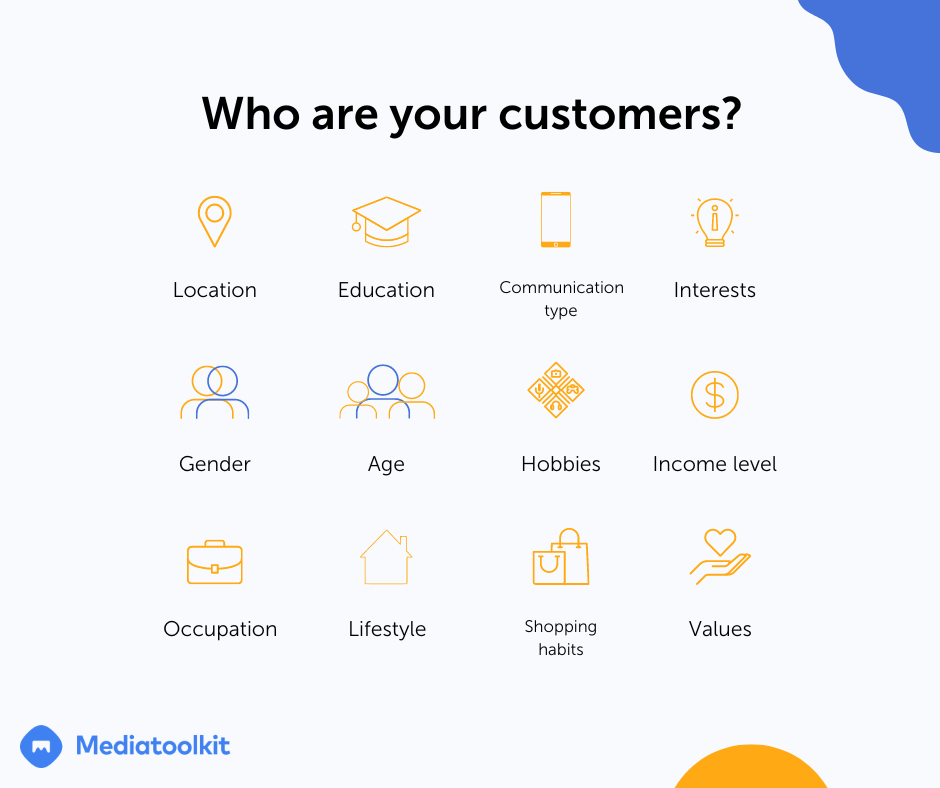Would it be correct to say that the key to effective marketing lies in a well-thought-through marketing strategy? Probably.
But let’s leave the big words aside, and look at the facts for a bit.
Research shows that organized marketers are 674% more likely to report success. In other words, organized marketers are 7 times more likely to succeed. The reason is very simple. Having a strategy keeps everyone on the same page and helps set priorities. It also gives valuable insights as takeaways that you can use when setting new plans and goals.
In this guide, we’ll go through the definition of a marketing strategy and how it benefits your business. And then, we’ll move on to how you can create one and which tools you can use to help you out.
Let’s dig in!
What is a Marketing Strategy
A marketing strategy is an overall outline of long-term marketing plans with one fundamental goal – to reach prospective consumers and turn them into customers.
A thorough marketing strategy encompasses several steps. It starts with setting goals and target audience, makes you learn about the industry, competitors, and opportunities, determines the right tools and channels, and, if done right, in the end, it increases your revenue. But we’ll discuss all of this in detail in a minute.
Why is creating a marketing strategy necessary?
Having a well-thought-out strategy with as many details as possible will ensure you are at least partially prepared for anything coming. You will get to know your market and customers better, be better acquainted with what you’re up against on the market, and direct your financial means into what really makes sense.
Read How to Secure Your Marketing Campaign’s Success
Benefits of Having a Marketing Strategy
Creating a marketing strategy usually involves certain aspects of your business that you don’t think about often. It makes you rethink your business values and visions, revisit your definitions of perfect customers, and challenges you to set new and measurable goals.
The result? According to a study published by CoSchedule, marketers that plan their marketing proactively are 331% more likely to report success.
Well planned is half done, after all.
Let’s take a closer look at what particular benefits a set marketing strategy brings to your business.
Read Writing a Marketing Pitch: How Social Listening Can Help You Land New Clients
It helps you understand your target market
While creating a product or a service, you usually go from the mere necessity. Meaning you’re probably trying to fill a market gap or have something additional to offer within an existing market. But how often do you think about that person who would actually buy what you’re offering?
What is this person like? Do you know anything about their lifestyle? What bothers and what drives them?
Every time you create a marketing strategy, it takes you back to square one – to who your buyer persona is and how you fulfill their needs. The ultimate result is that you add more and more details, making it easier for you to make product decisions, shape marketing campaigns, and set reasonable goals.
Read How to Do Market Research With a Media Monitoring Tool?

Defines your Unique Selling Proposition (USP)
Apart from making you rethink your target audience, a good marketing strategy also focuses on your product/service. Learning what your competitors are doing, how industry trends change, and how your business sails the rough market seas can help you determine your unique selling proposition. And this proposition should permeate your entire brand. It can be something like We’re selling top-notch pencils or We’re all about high-quality customer service.
Why is this so important?
According to scientists, the human brain consumes around 34GB of information daily. So, in order to be able to function normally, it tends to group data into categories and label them. E.g., the safest car, the healthiest bread, the most expensive perfume, the most reliable technology, etc. Your unique selling proposition should be stated in your marketing strategy so firmly that it corresponds to the label people would attribute to your brand.
Brands your business
Creating a marketing strategy doesn’t revolve only around finding leads and customers. It’s more about expressing your company’s vision, culture, values, and purpose. And the process of communicating your values and vision is the foundation of your branding.
Take Nike, for example. It’s a brand focused on innovation and performance, and this idea is present in its entire visual and textual communication. From the very name coming from the name of the Greek goddess of victory, Nika, to its motto “Just do it!”, Nike became the synonym for top performance. The entire brand is completely focused on encouraging their customers to be better at what they’re doing.
Read Brand Reputation Management: Top 5 Tips for Success

Grows your sales
With a better understanding of your target audience, a clear vision of how you differ from your competitors, and a clear brand vision permeating the whole communication, you are bound to reach your target audience. But what happens next?
What you need after that is consistency. According to research, consistent brand exposure increases your revenue by 23%. By giving your brand a focus, making it known in the marketplace, and improving the effectiveness of your messaging, you are positioning yourself firmly on the market. And this exactly is what you’d like to achieve.
Let’s go through the steps necessary to create a marketing strategy that wins.
7 Steps to Create a Marketing Strategy
A structured marketing strategy will serve as a backbone of your development. Therefore, the better you prepare it, the easier it will be for you to reach your objectives.
If you’re unsure where to start, it’s always good to go back to what you’d like to achieve.
1. Identify your goals
Go back to what the purpose of your business is. Something abstract like – make the world a better place? Or something rather concrete, like dominating a specific communication channel? Whichever your master plan, your marketing strategy should reflect it.
Once you determine where you’re going, it’s necessary to define pretty specific steps that will take you there. And make them SMART.
What are SMART goals, and how to make them?
The SMART in SMART goals means specific, measurable, achievable, relevant, and time-bound. When you define these parameters, you are forced to think from a higher perspective, push your efforts in a specific direction and ensure that the amount of work is doable within a particular time frame.
Let’s imagine you’re working in a marketing department of an eCommerce company, and you need to increase the lead-to-MQL conversion rate within three months. If you achieve this goal, this is an excellent opportunity to pull out your best practices and increase the goal next time. If, on the other hand, you don’t, then it’s time to revisit the goal, reconsider whether it was too optimistic, and think about what you can change in the future to reach it.
Let’s see what each of these parameters means for your goal.
Specific
A goal needs to be specific in order to be effective. What does this actually mean?
For starters, here are a couple of questions you need to ask yourself:
- What do I have to accomplish?
- Which exact steps do I need to take to get there?
- Who is responsible for that?
Now let’s go back to imagining you with the task of increasing the lead-to-MQL conversion rate. Your specific goal would probably be something along these lines:
Grow the lead-to-MQL conversion rate through targeted paid campaigns on search engines and social and through producing SEO-optimized content to increase the organic traffic on your website.
Measurable
Now that you’ve specified exactly what you’d like to achieve, it’s time to add some numbers to this goal. In this way, you will be able to measure whether what you’ve achieved was successful or not.
So how to know which target to aim for?
It’s best to start from where you are at the given moment and to check out industry benchmarks. Research and determine which numbers are acceptable for your industry and if you’re far from it. Also, if you’re opting for paid advertising, think of the channels you will use for your ads.
Let’s go back to your position in an eCommerce company, and let’s say that your current conversion rate is at 10%. The industry benchmark is 23%. You can start by setting your aim at 13%. Your measurable goal will look something like this:
Increase the lead-to-MQL conversion rate to 13% through targeted paid campaigns on search engines and Twitter, Linkedin, and Facebook and through producing SEO-optimized content to increase the organic traffic on your website.

Achievable
At this point, you should revisit your goal and consider whether you have enough people and resources in your team to achieve it.
If you’re a team of 3 people, with one PPC specialist on board, then you can’t plan to increase the amount of content and work on bringing customers to your website organically. Also, you might want to reconsider whether one person can handle working on ads for both search engines and three social media platforms. In this case, you might want to lower your expectations to:
Increase the lead-to-MQL conversion rate to 23% through targeted paid campaigns on search engines and two social media platforms: Twitter and Linkedin.
If you reach the goal, you can increase it the next time. On the other hand, if you don’t, then rethink your strategies or consider hiring more people to your team to be able to work more effectively on the set goal.
Relevant
This is where you ask yourself if this goal is something you really need at this specific moment? Why are you setting this goal?
If you’re thinking about increasing the visitor-to-MQL conversion rate, then the end objective is very clear – to increase the number of sales conversations which will ultimately lead to increasing the revenue. If you are positive that you’re having problems reaching the right people and that this is where you’re potentially losing customers to your competition, then this is definitely one of the most important goals you need to consider. Include the reasoning in your goal description.
Increase the lead-to-MQL conversion rate to 23% through targeted paid campaigns on search engines and 2 social media platforms: Twitter and Linkedin. We’ve noticed a decrease in the number of visitors, leading to fewer inquiries, so we’ll target all potential customers through ads on channels they use most frequently.
Time-bound
In order to make this goal measurable, you need a time frame. When can you start with what you’ve planned? How long do you need to prepare for that? When do you think you’ll see the first results? Suppose you’ll take the entire quarter of the year to check your success. So your goal will then look like this:
Increase the lead-to-MQL conversion rate to 23% within Q4 through targeted paid campaigns on search engines and 2 social media platforms: Twitter and Linkedin, which will start running in September 2022. We’ve noticed a decrease in the number of visitors, leading to fewer inquiries, so we’ll target all potential customers through ads on channels they use most frequently.
And here it is – your specific, measurable, achievable, relevant, and time-bound goal. When the designated period ends, it’s always time for a thorough analysis.
Whichever the result – this is where you start planning your next goal.
2. Create buyer personas
If you haven’t thought about who your marketing efforts are aimed at, now is your time to define it. Creating a buyer persona is like giving a direction to your marketing strategy. A buyer persona is in fact your ideal customer.
So if you’re, for example, working in an eCommerce company, your buyer persona can be Linda – a sales representative in her 30s, working for a fashion brand with not much free time on her hand. She absolutely depends on her mobile phone and does all of her shopping online. Linda loves to travel, reads fashion magazines, and likes to check out celebrity news.
With Linda in mind, you will shape all your campaigns. You’ll make them very clear and mobile-friendly, and you’ll make sure your website is extremely fast since Linda doesn’t have time to wait 15 seconds for the website to open.
When thinking about buyer personas, include all their demographical, psychological, and geographical info. Think about their interests, what they do in their free time and what their challenges are. The more info you have, the easier it will be for you to shape your marketing strategy and target your ideal customer.
3. Research your market
Once you’ve set your buyer personas, you’ll need to take a look at the bigger picture – the market. That includes investigating the market size and your growth potential, your competitors, trends, and customer behavior. Apart from traditional methods like surveys and focus groups, one method will give you “raw” and unbiased results – social listening.
Social listening is the process of monitoring online conversations on websites, forums, and social media platforms, evaluating their significance and determining action points based on the results. More than 50% of marketers have turned to social listening after the pandemic to understand their customers’ behavior. The reason is quite simple – you get honest opinions, in their natural surroundings, not influenced by artificial circumstances and hypotheses, like in surveys or focus groups.
Take the fast-food restaurant Wendy’s, for example. In 2010, they debuted their new fries with sea salt and had a huge success. It seems rather plain, but you probably don’t know that before the launch, they tracked online conversations for a couple of months and noticed concerns over high sodium intake among their customers. Also, they discovered that people react more positively to “salt” than “sodium”, so they decided to focus their campaign on positive health associations with their new fries.
The result? The customers loved it, and the whole campaign was a huge success.

4. Analyze your competitors
When creating a marketing strategy, one of the first things to consider is who you’re competing with. And this goes for any industry. Conduct a thorough analysis of where you stand and then examine your competitors. What kind of products they’re offering, how they advertise them, what kind of campaigns they’re using, on which channels they’re present, and what gaps they’re not covering.
From this point, you can take two directions – you will either try to outperform them or offer a better service/product. Or you can focus on their gaps and offer to create something new yet unpublished.
Read Competitor Analysis: Stay Ahead of Competition with Media Monitoring
5. Define tools and resources
Once you’re sure what you’d like to achieve with your marketing strategy and who you’re competing against, it’s time to decide what you’ll need to achieve it.
Start with your team. What competencies do your teammates have, and what practical knowledge do they own that they can use within the framework of your strategy. You might also like to know which digital tools they’re using and how they can contribute to the success of your strategy. Or if there are any tools or resources that are critical to the success of your marketing strategy that you still don’t own or don’t have knowledge of.
Depending on your plan, you will surely require a tool to measure the success of your strategy, and a person who will be taking a look at these analytics. Google Analytics is always a good starting point for everything website-related. If you’ll be present on social media, every platform has its own integrated analytics that you can also take advantage of. We’ll go through a couple of valuable tools in a second.
Read The Ultimate Marketing Tools Your Agency Needs
6. Choose the right channels
The choice of channels will primarily depend on your buyer personas. If you’ve described them as people spending time on social media, then this is where you should invest your efforts. Additionally, you will want to consider choosing the channels that correspond to your brand image, voice, and product/service you’re selling.
So if your target audience is millennials, then your primary channel probably won’t be TikTok. That doesn’t ultimately mean you shouldn’t use it at all within your marketing strategy. Including something new and adding refreshment to your strategy is a good way to test the market – maybe you’ll end up discovering another great source of leads.
7. Measure your results
Whichever approach or channel you opt for, it’s essential to evaluate your results in the end. Let’s say you’re investing a lot of money in paid campaigns on Twitter, and they aren’t bringing much return. In this case, maybe it’s time to rethink whether your messaging is right or whether this is a good channel for your marketing efforts at all, and test something different.
Relevant data you get from testing different approaches and channels is crucial for anything you do in marketing. This is where you start from once you start planning your new marketing strategy, and this is how you can ensure growth and optimization.

5 Tools You Can Use while Creating a Marketing Strategy
1. Notion
While creating a marketing strategy, you will need a place where you’ll save your documents, create short and long-term goals, and where you’ll be able to assign tasks to you and your teammates. In comes Notion.
Notion is an all-in-one platform used for collaborations, project, and task management. The best part is that it’s completely customizable, so you are sure to find a template that will correspond to your needs completely. When using software like Notion, you can rest assured that your entire team is continuously updated and on the same page about everything.
2. Determ
Determ is a brand monitoring and social listening tool which tracks over 100 million online resources for relevant mentions and delivers them to your feed in real-time.
How does this help your marketing strategy?
For starters, you can do thorough market research through the tool and find out what your target audience likes/dislikes. You can find out everything about industry trends and how the public responds to them. What is more, you can get honest opinions about your brand and understand better how you’re perceived in the market. In addition, you can find out all this information about your competitors, which will give you a better understanding of how they perform, how they deal with crises, and what their pain points are.
Before you even start to create a marketing strategy, take a while and set up corresponding queries in a social listening tool – you will be amazed by the amount of helpful info you will get.

3. HubSpot Marketing Hub
If you’re looking for a tool to help you speed up and automate your marketing processes, then HubSpot’s Marketing Hub is just the thing. It has marketing automation software, SEO software, analytics & dashboard, site search, landing page builder, online form builder, email marketing tools, etc. You basically get all the tools you need to nurture your leads into loyal customers. In addition, you get whole dashboards of analytics to track all your campaigns and measure effectiveness.
4. Ahrefs
If your goal is to improve your website’s organic traffic, site health and increase your domain authority, then you’ll need a good SEO tool – like Ahrefs. This tool will provide information about your site’s backlinks, how much traffic you get from which source, your most popular pages, and keywords, and valuable information on your site’s health and technical SEO.
Additionally, you can find new content opportunities. What is more, you can check all this information about your competition as well. In this way, you can find content gaps or check which content performs better on their site and try to compete with that. A valuable asset if your goal is long-term success and if you’re willing to invest time and money into something which will not start showing results immediately.

5. Buffer
Buffer is a social media management platform that enables you to manage multiple social media platforms from one dashboard. It gathers useful analytics for every post you make. Also it allows you to monitor, manage and engage in conversations on your posts and paid ads. Buffer is another excellent source of valuable data you can use when planning your social media marketing strategy.
Wrap Up
Finally, you need to consider that creating a great marketing strategy doesn’t happen overnight. If this is your first time, prepare for many mistakes. If it isn’t – make sure you learn from them.
With time you will discover that secret recipe that will hit your customers’ sweet spot. Be it the best channel, the right message, or the perfect medium.




